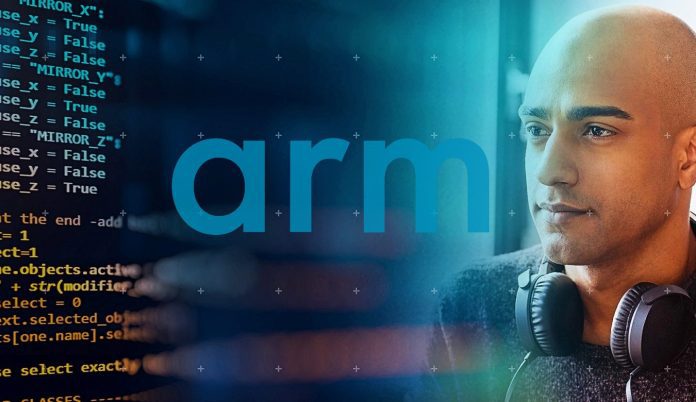UK-based Arm has introduced a new cloud-based IoT design system to enable software development for IoT without the need for physical silicon. The new offering, called Arm Total Solutions for IoT, brings together the software and hardware design processes, into a single virtual co-innovation process, the company says. It will accelerate product design by “up to” two years, it reckons – and even, it said, lay the foundation for a “new IoT economy”.
The new system is built on Arm’s Corstone subsystem package, providing the nuts and bolts for system-on-chip (SoC) design, including references for processors, system IP, memory system, and various debug and security IP. Corstone has been used for 150 silicon designs, the company said. Arm’s new Virtual Hardware Targets, part of the new Total Solutions for IoT system, delivers a virtual model of the Corstone subsystem.
This cloud-based model brings modern agile software development methodologies like continuous integration / continuous deployment (CI/CD), software development and IT operations (DevOps), and machine learning operations (MLOps) to IoT and embedded platforms, says Arm. It dispenses with the need for software developers, equipment manufacturers, and service providers to invest in complex hardware farms.
A statement said: “With accurate models of Arm-based SoCs providing mechanisms for simulating memory, peripherals, and more, development and testing of software is now possible before silicon availability. This reduces product design from an average of five years to as little as three. It allows partners to gain customer feedback for chips before tape out, [and]… to easily develop and test code on the latest IP ahead of silicon availability.”
It added: “Arm Total Solutions for IoT [is] a complete solution for specific use-cases, leaving developers to focus on what matters – innovation and differentiation across diverse applications and devices. It has everything to simplify the design process and streamline product development, including hardware IP, software, ML models, advanced tools such as the new Virtual Hardware Targets, application specific reference code, and [ecosystem] support.”
Arm Virtual Hardware is available on AWS Marketplace. The first configuration is available now for general-purpose compute and ML workload cases, along with Virtual Hardware Targets for multiple configurations of the Arm Corstone-300 subsystem incorporating the Arm Cortex-M55 processor and Arm Ethos-U55 microNPU. A “robust roadmap” of future solutions, including for voice recognition and object recognition, is in the pipe, it said.
Meanwhile, Arm has also introduced Project Centauri to deliver a set of device and platform standards for the Arm Cortex-M software ecosystem, as well as reference implementations for device boot, security, and cloud integration. Project Centauri aims to achieve for Cortex-M what Project Cassini does for the Cortex-A ecosystem, said Arm, so customers can leverage their software and services across the widest range of platforms.
Project Centauri APIs include support for PSA Certified and Open-CMSIS-CDI; the initiative will further reduce engineering costs and accelerate time to market, it said, as well as enabling IoT deployments at scale, and better security on Cortex-M units. Around 70 billion Cortex-M devices have so far shipped in the market, it reckons. Sales of IoT chips will grow at an average (CAGR) rate of 15 percent through 2026, it said, quoting Mordor Intelligence.
Mohamed Awad, vice president of IoT and embedded at Arm, said: “This [is] the beginning of a new era for IoT – one of true software and hardware system-level co-design. Arm is uniquely positioned to unite software and hardware developers to create purpose-built compute and unleash the economic benefit of the IoT. From the smartphone to the data center – and now IoT – designing with systems in mind is the key to accelerating innovation and getting the best out of specialized processing capabilities… wherever computing happens.”

